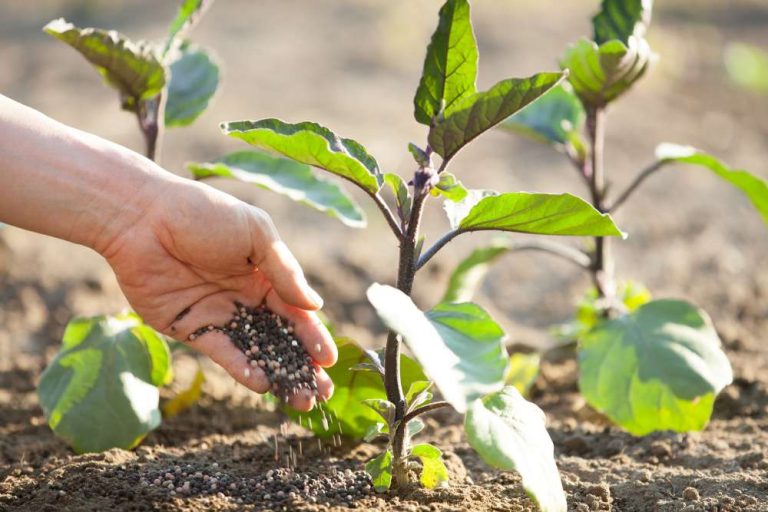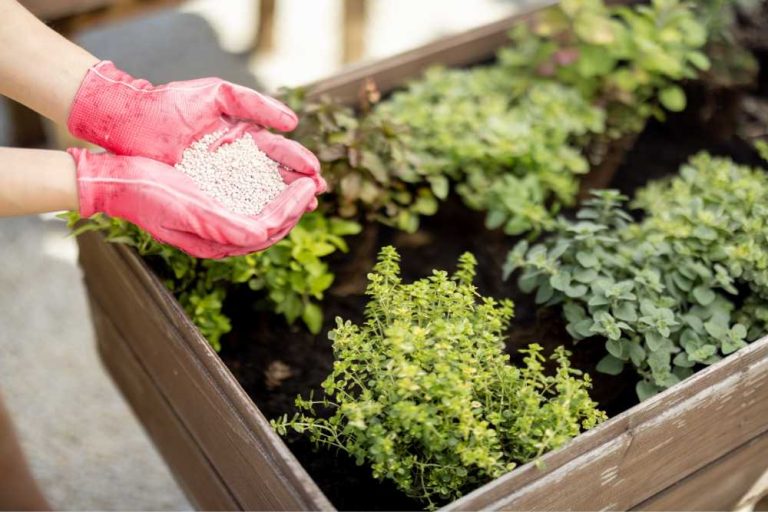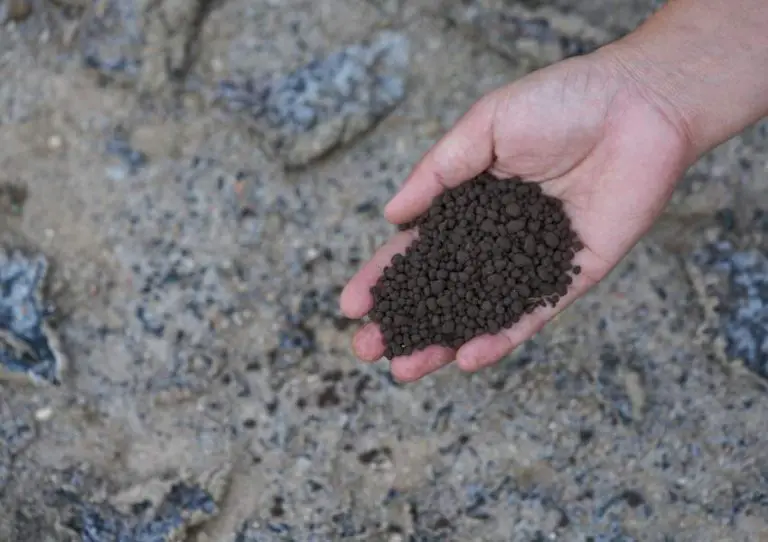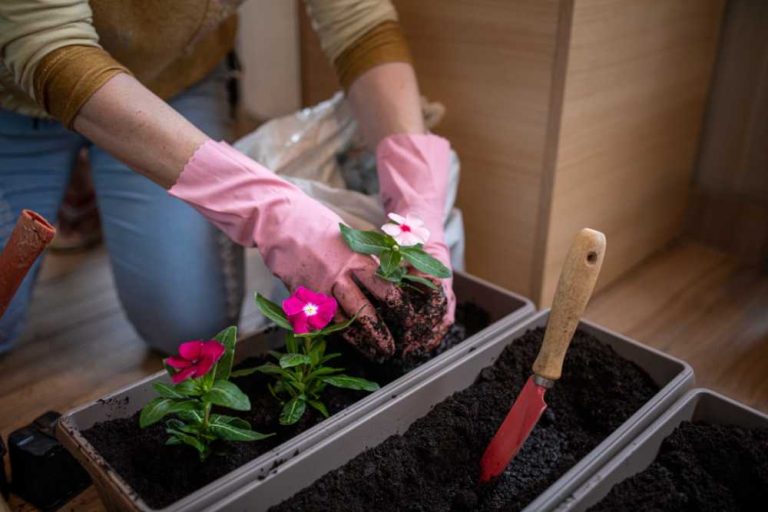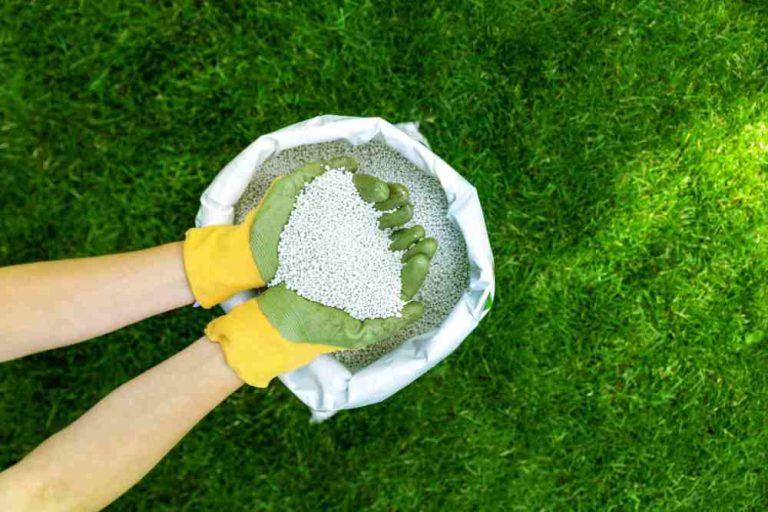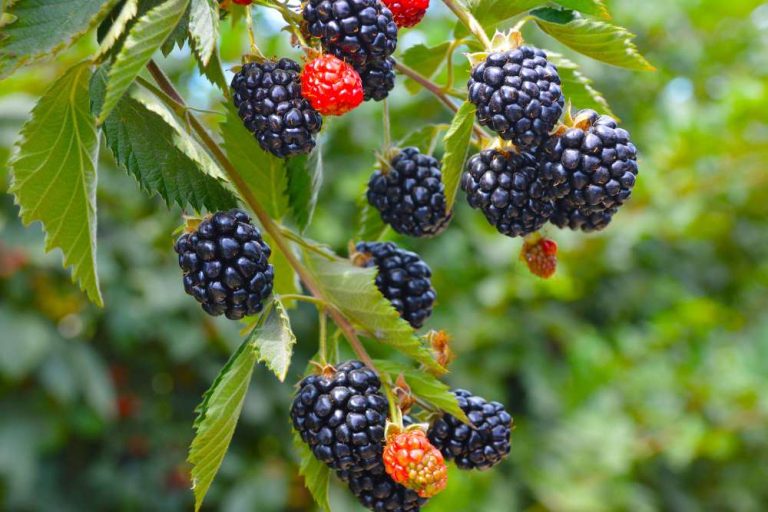What is Good Fertilizer For Fruit Trees? A Comprehensive Guide
Every year, fruit trees produce delicious local fruit and beautiful landscape features. Fruit trees are big feeders and need more fertilizer than indoor ground plants. They will quickly absorb all the nutrients from the soil needed for their growth and fruit development.
You should intelligently pick a cost-effective and beneficial fruit tree fertilizer if you want to enjoy delicious fruit all year long. Fruit trees receive the exact nutrition they require from the best fertilizers. We’ll discuss which fertilizers work best for various trees because they don’t all need the same nutrients.
A fertilizer is something that gives plants nutrition. Plants can be fed with various fertilizers, each uniquely impacting the plant. The best fruit tree fertilizer will concentrate on a specific aspect that the tree needs at a given time or for a specific type of tree.
Choosing the Ideal Fruit Tree Fertilizer
When fruit trees have access to the proper ratio of macronutrients, they will produce larger, healthier fruit in greater amounts. In particular, fruit trees require nitrogen to maintain continuous growth and fruit production, and the amount they need is primarily based on the growth from the previous year.
Other macro and micronutrients should be added depending on the results of regular soil pH tests. For instance, boron promotes flower and fruit production, while trace elements like calcium can enhance productivity the year after a poor harvest.
When it comes to fertilizing fruit trees, it is important to remember that you only need to apply what your soil lacks and what your plant requires.
This implies that selecting the best fruit tree fertilizer for your needs is all about checking the soil pH before fertilizing and understanding the age of your trees and the type of fruit you are cultivating. Your decision on what product to purchase will also be influenced by the quantity of fruit trees you have and whether they are in pots or on the ground.
Most fruiting tree species don’t require fertilizer for the first year following planting. Fertilizing can start in the spring and again at the start of the summer, starting in year two, but only after a soil pH test has confirmed any deficiencies.
Slow-release granules are the most cost-effective and labor-saving feeding solution if you have adequate room for an orchard or a cluster of fruit trees that need fertilization. On the other hand, if you only have one or two fruit tree specimens in pots, you may decide that spikes are the right choice.
What to Consider When Choosing the Best Fertilizer?
NPK Ratio
Fruit trees need a precise ratio of nitrogen (N), phosphorus (P), and potassium (K) to develop healthily and bear delicious fruit. Look for a fertilizer with a balanced ratio of these nutrients, such as a 10-10-10 or 8-8-8 fertilizer.
Soil and pH Level
Which fertilizer is ideal for your fruit trees will depend significantly on the type of soil and pH level in your garden. Make sure to have your soil tested to ascertain the pH level, and then select a fertilizer specifically designed for your soil type.
Tree Age
The age of your fruit trees will determine the type and amount of fertilizer you need to use. Young trees may require more regular fertilizer applications, while mature trees may only require fertilization once or twice a year. Follow the manufacturer’s directions for the specific fertilizer you purchase, as application frequency may vary based on the type of fertilizer you use.
Inorganic vs. Organic
Fruit trees can benefit from the use of both organic and inorganic fertilizers. Your trees can receive the vital nutrients they need to grow healthily and bear rich fruit from inorganic fertilizers, such as chemical fertilizers. Compost and bone meal are two examples of natural organic fertilizers that can give your trees the nutrients they require to develop healthily.
Read Customer Reviews
Before making a purchase, read customer reviews and ratings to determine the fertilizer’s performance and level of satisfaction.
Budget Considerations
Fertilizers are available in a variety of price ranges. The cost of the product should be weighed against your budget, as well as its effectiveness. Remember that more expensive fertilizers could come with extra advantages like slow-release formulas or organic certifications.
Fertilizing Fruit Trees In Containers
Of course, having a fruit orchard is every homesteader’s dream. However, what if you reside in a city? Perhaps in a townhouse with a little yard or even an apartment with only a small balcony? Is it too late for you? Without a doubt! Dwarf fruit trees were bred specifically for this style of life, offering city people the experience of growing their own healthy snacks and inhaling all that wonderful fruit-blossom aroma.
You can grow a fruit tree or two in large, ornamental pots, even in a little outside space. However, they require more care than trees growing in the ground. Watering regularly will inevitably result in soil and nutrient runoff as the excess water drains. Therefore, regular feeding will also be required.
We have discovered that several fertilizers for fruit trees have higher nitrogen content. This is very advantageous for large fruit and nut trees. However, the excess nitrogen in containers will direct more of the tree’s energy toward producing new leaves and less toward producing blossoms and fruit. So, while selecting a fertilizer for potted trees, keep the first number in the NPK ratio in mind. It should be equal to or less than the other two.
Except if you have citrus or avocado trees that are miniature. In contrast to other kinds, they rely heavily on nitrogen to produce all that delicious fruit. Therefore, the initial NPK number must be higher.
Fertilizing Fruit Tree In The Ground
Fruit trees in gardens or orchards that are already established have different requirements than those in pots. They expand simply because they are in a broader and more diverse environment. Understanding their requirements ensures that your fruits meet, if not exceed, your expectations season after season.
Observing them is one approach to becoming acquainted. When do the first leaves start to show? When do they begin to bloom and produce fruit? You’ll know precisely when to fertilize them once you’ve determined the timing of these events.
Depending on the sort of fruit you’re cultivating, you may need to feed them twice or thrice per growing season (label instructions may alter depending on the application type, which is acceptable). This usually begins in the early spring, shortly before the flowers bloom. The trees absorb the greatest nutrients at this time when they start their growth cycle.
If you live in a more moderate region, you can administer the first dose as early as February, but not earlier. A second time, after flowering, but before the fruit appears. Then, only if necessary, a third time in the fall. Some fruiting trees’ new growth will be susceptible to frost damage if fertilized too late, which may spread to other areas of the tree.
Again, if you know what to look for, the fruit trees in your garden will be eager to communicate with you about their needs and when to address them.
7 Best Fertilizers for Fruit Trees
1. Down to Earth Fruit Tree Fertilizer 6-2-4
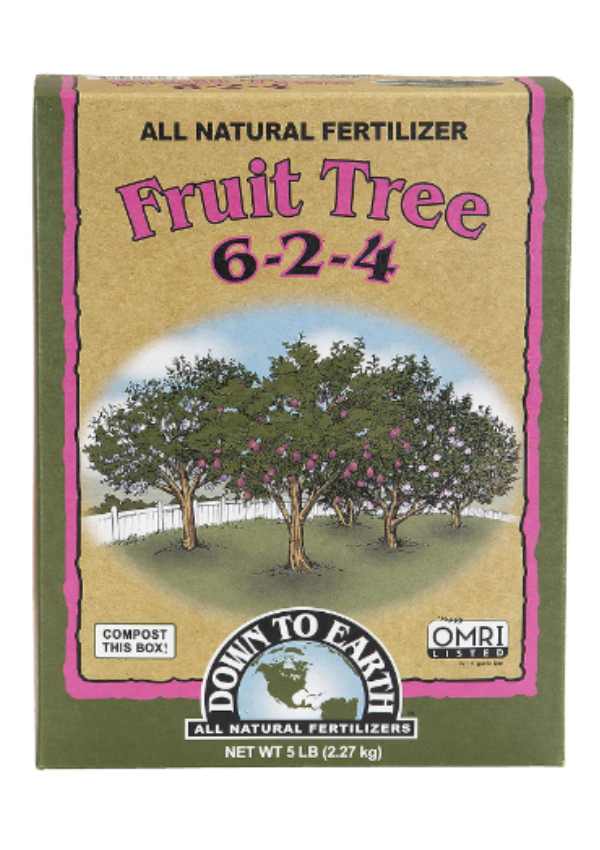
The calcium in the recipe aids in fruit development, and it is suitable for all types of fruiting canes, shrubs, and trees.
It is specially prepared to promote fruitful home orchards and offers essential nutrients for plant development. The only drawback is that the fertilizer smells really strongly, but it’s worth it for the lovely blossoms’ delicious aroma! It’s also more expensive than other solutions, but buying bulk from the manufacturer’s shop can save money.
How To Use:
- Use 1 to 2 cups of fertilizer per inch of trunk beneath the dripline for young trees. Repeat this three times a year: once in the spring after flowering, once a month later, and once more a month later.
- For older trees, apply twice a year—once in the spring after flowering and again in the middle of the summer. You’ll need to measure the amount required (depending on the size and type of tree) and sprinkle it directly into the soil. Irrigate the area just dug after putting the fertilizer in, so it may start working immediately.
2. Dr. Earth Organic Fruit Tree Fertilizer 5-5-2
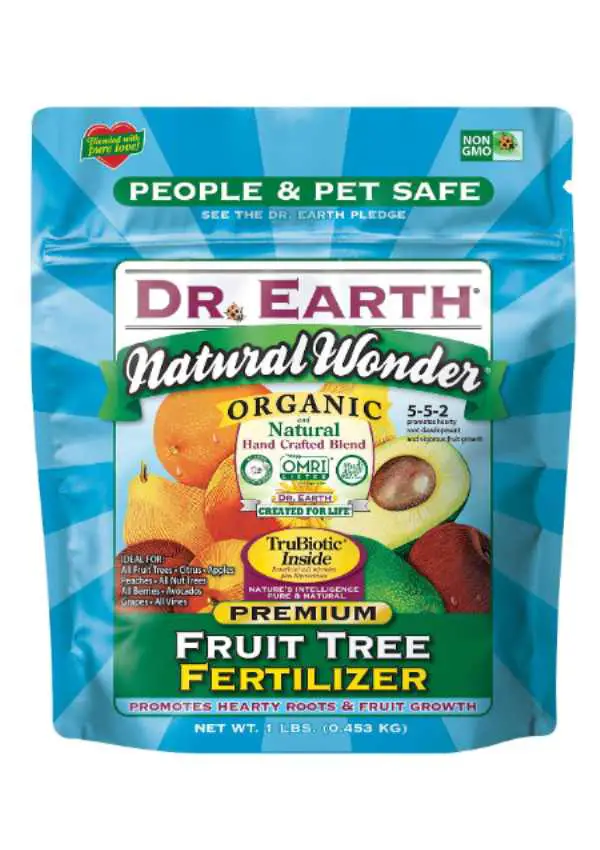
The TruBiotic recipe contains organic microorganisms and mycorrhizae that encourage root development and fruit growth, making it ideal for places with less rich soil and low rainfall. It contains no additional fillers or chicken dung and is suitable for use near people, pets, and wildlife.
The main disadvantage is that it may have a mild, natural odor. Dr. Earth Organic Fruit Tree Fertilizer contains natural organic nutrients in land plants, ocean plants, fish, fish bones, and minerals.
It is OMRI, OIM, CCOF, and NOP certified, so you can be confident that you are utilizing a safe and effective product. The granular application makes it simple to use, and it offers amazing results with immediate nutrient release and ongoing feeding for several months.
How To Use:
- Work 1 cup of fertilizer into the soil within the drip line of established fruit trees every three months throughout the growth season.
- Add 2 cups to the planting hole for new trees and thoroughly water.
3. Earth Pods Premium Fruit & Citrus Plant Food Spikes 2-2-4
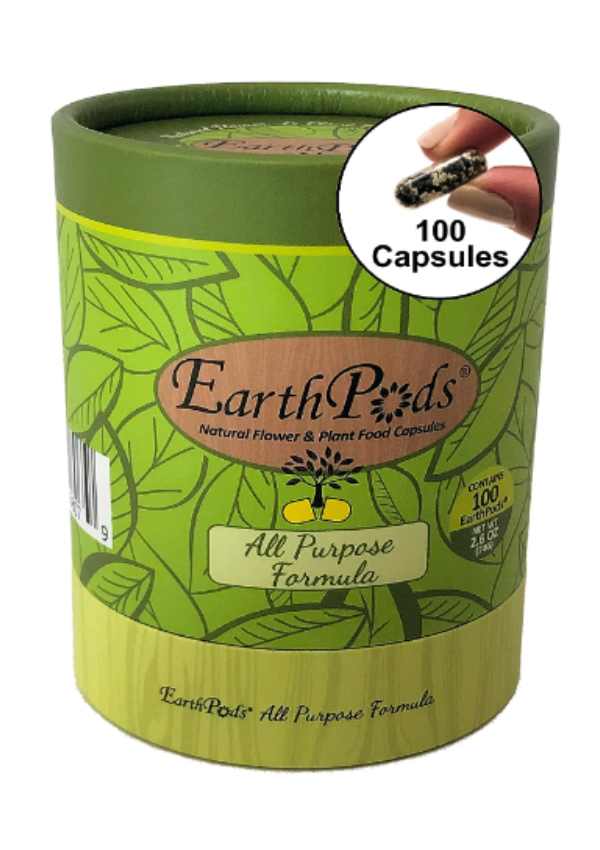
The particular recipe offers the greatest results because this fertilizer releases many minerals, nutrients, humus, and soil organisms in the soil for tree development and biological activity.
These Earth Pod capsules are a great option for fruit trees in pots in indoor and outdoor environments because they don’t smell naturally. This 2-2-4 NPK feed has minimal risk of root burn and requires no measuring.
Earth Pods has gained popularity in recent years because of their all-natural fertilizer components and ethical, zero-waste packaging. Their capsules are also available for various indoor and outdoor plants and shrubs, ranging from succulent fertilizers to veggie plant food.
How To Use:
- Open the capsules and sprinkle the contents over the soil around the trunk before watering.
- Replicate each 2-3 weeks.
4. Espoma Organic Tree-Tone Fertilizer For Fruit Trees 6-2-3
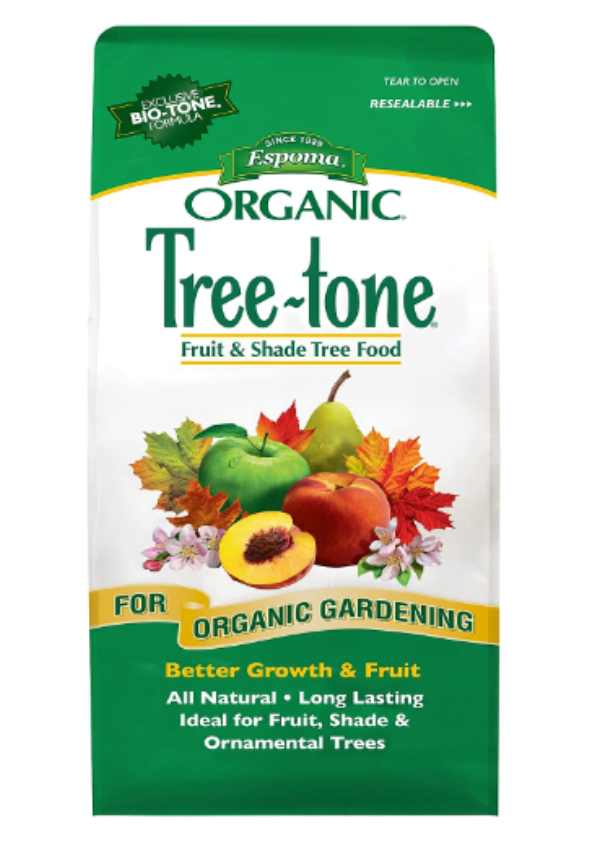
Fruit trees that like the sun, as well as ornamentals that prefer the shade, will both benefit from this multipurpose fertilizer.
One of the things we like best about this fertilizer is how rapidly it helps unhealthy trees. The simple slow-release mix needs two seasonal sprays and gives trees reliable slow-release nourishment. It’s also fantastic for ornamentals, nut, and non-citrus fruit trees.
Espoma’s organic granular feed is incredibly adaptable and effective. All species of non-citrus fruit trees can receive constant, slow-release nourishment from the 6-2-3 NPK balance and unique Bio-tone microorganisms with just two seasonal applications.
We adore how simple it is to use this fertilizer. Because it has a slow-release action, you can easily apply the first application in the spring, and a second application in the fall, which will restore nutrients that are depleted in the soil and get it ready for the following year.
This is a fantastic option for fruit trees that are normally in good health and don’t require any special fertilizer. Use it for cherry, plum, pear, and apple trees. Using it on nut trees like pecan, chestnut, and walnut trees is also an excellent idea.
Strong fruit cells, which are necessary for healthy fruit trees, are provided by the additional Bio-tone bacteria and calcium.
However, a higher amount of product may be required to obtain the desired outcomes, and it is not suited for use on potted trees. Large trees necessitate drilling holes in the ground, which can be time-consuming.
Espoma Organic Tree-Tone Fertilizer For Fruit Plants 6-2-3 is an excellent organic fertilizer for young plants to grow strong limbs, branches, and roots. The 6-2-3 NPK ratio is a flexible fertilizer option since it nourishes ornamentals, fruit trees, and nut trees.
How to Use:
- For every inch of the tree trunk, apply 9 cups (3 lbs) of fertilizer.
- The soil surrounding the tree trunk and inside the drip line should be covered with the necessary amount of granules.
- Apply once in the early spring and once again in the early fall.
5. Jobe’s Organics Fruit and Citrus Fertilizer
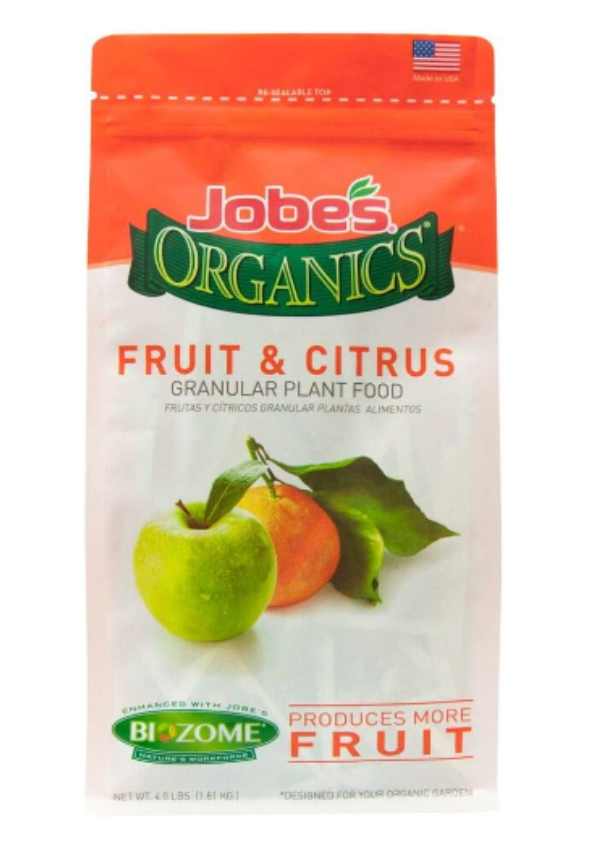
Since it is organic, this fertilizer is safe for people, pets, and the environment and gives your fruit trees long-lasting effects. The roots of the trees actively and quickly disperse the nutrients.
Fruit trees that are dying or yellowing will come back to life within a few days of treatment, and you will be delighted at the amount and beauty of blooms and flowers.
This Jobe’s fruit tree fertilizer contains the unique Biozome, much like many other Jobe’s fertilizers. Beneficial microorganisms are what enhance the soil’s organic activity. So you’re aiding your fruit trees and doing your soil a favor.
This fertilizer’s four main organic components are processed manure, sulfate of potash, bone meal, and feather meal. This plant food can be used to fertilize any sort of fruit tree. You’ll get a higher yield.
Because it is an organic fertilizer, it boosts your fruit tree’s immune system, lowering the risk of diseases and pests. It comes in granular form, so you can modify the nutrient content in accordance with the label’s directions or based on the requirements of certain plants.
The NPK ratio is crucial for any type of fertilizer. This fruit tree has a 3-5-5 ratio, which may be too low for some fruit trees but is beneficial over the long run.
According to the instructions, this fertilizer should be applied again every two to three weeks (or as needed). Jobe’s Organics Fruit and Citrus fertilizer should be used to feed your fruit trees in the late spring, early fall, and late winter.
How To Use:
- To achieve luxuriant, environmentally friendly outcomes, insert a spike every four to six weeks for every six inches of the tree’s overall diameter.
6. Down To Earth Organic Citrus Fertilizer Mix 6-3-3
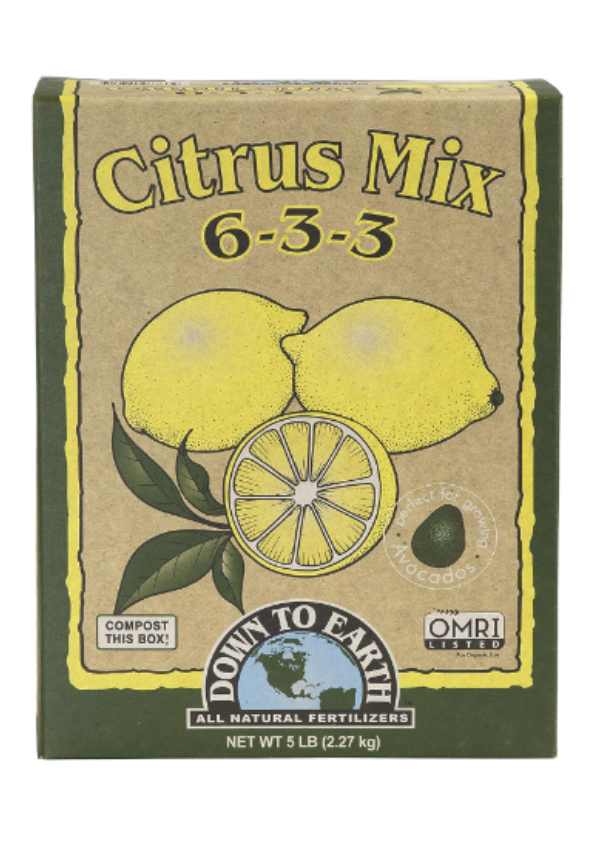
Citrus trees are attractive due to their shiny leaves, enticing flowers, and tasty fruits. A high-quality citrus fertilizer feeding will enhance the appearance of this exquisite fruit tree.
Since 1977, this company has offered organic products. The organic fertilizer’s NPK ratio of 6-3-3 is its main selling factor. It also contains a healthy combination of other critical nutrients, including sulfur, zinc, magnesium, iron, and the three primary macronutrients.
It is the only fertilizer available with organic zinc, calcium, and iron sources, making it the ideal synthesis of organic and chemical materials. This organic fertilizer encourages outstanding foliage, flower, and fruit growth using natural components like fish bone meal, feather meal, alfalfa meal, and kelp meal. These all-natural substances stimulate new growth, greater fruit, and fragrant flowers, and you can get some for your tree fertilizer requirements here.
A higher nitrogen ratio promotes more flowers and juicier fruit. This is an excellent fertilizer for fruit trees since it delivers vital minerals and micronutrients to the roots, immediately allowing you to see benefits.
How to Use:
- Mix 1 cup into the soil for fresh plantings, then thoroughly water. For mature trees, apply 1 cup of feed for every inch of trunk diameter, and then repeat 3–4 times annually.
- You can dilute this product and use it as a liquid feed.
- Feed your citrus tree 3–4 times annually to maximum fruit yield. Because this granular fertilizer is intended for soil application and contains insoluble components, it should not be mixed with water.
7. Kellogg Garden Organics Fruit Tree Fertilizer 4-5-4
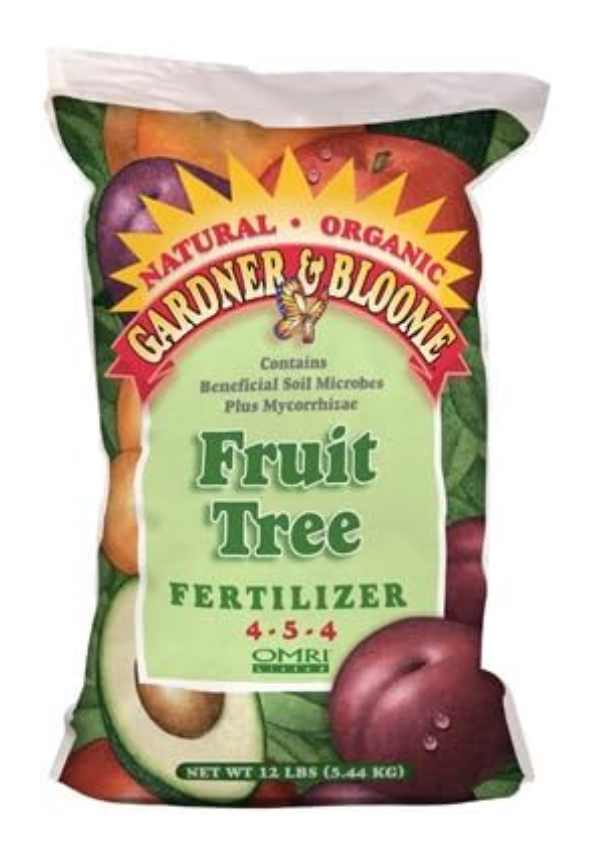
Kellogg’s slow-release organic granular fruit tree feed provides a unique and extensive range of applications for fruit plants, trees, and shrubs. It will promote robust, healthy root growth and the production of bigger, better fruits because it is fortified with necessary bacteria and mycorrhizal. You can be sure it’s full of the good stuff because it is also described as OMRI-certified organic.
Use it as a fertilizer for your berry bushes, citrus trees, and other fruit and nut trees. Due to its effectiveness and value as a comprehensive tree fertilizer product, this was chosen for the top selection list.
How to Use:
- Mix two cups into the planting hole for fresh plantings.
- Apply 1 cup per inch of trunk diameter to established trees, then repeat every three months.
- For pot plants, use 2 teaspoons for every 6 inches of pot diameter and repeat the process every two months.
8. Jobe’s Fruit Tree Fertilizer Spikes 8-2-2
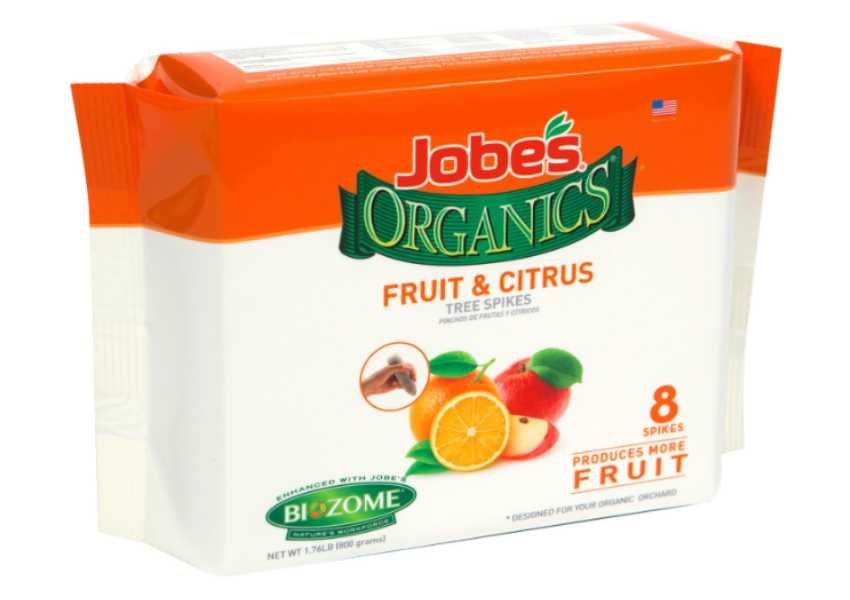
If you’re looking for a quick and easy way to fertilize your fruit trees, Jobe’s Fruit Tree Fertilizer Spikes are perfect. These organic fertilizer spikes feed the roots, and the pre-measured formula eliminates waste and runoff.
They contain Jobe’s Biozome, the patented microbe Archaea, which breaks down nutrients for faster results. The spikes are a secure option for individuals who want to avoid synthetic fertilizers because they are OMRI-listed for organic gardening.
One advantage of using Jobe’s Fruit Tree Fertilizer Spikes on different types of trees in your yard is that they are appropriate for all fruit trees.
They are designed to promote the growth of roots and lessen stress brought on by drought or extremely high temperatures, which can aid in the stronger and healthier growth of your trees. You won’t have to spend a fortune to provide your trees with the nutrients they require because they are also moderate and cost-effective.
How to Use:
- The spikes can be kept out of reach of kids and dogs if they are fully hammered into the ground. In the spring, evenly space them along the tree drip line.
- According to the directions on the packet, the number of spikes to use depends on the trunk’s diameter.
Related Posts
- How to Break Down Clay Soil Fast
- Best Rated Garden Fertilizers
- Best Fertilizer for Root Growth
- Best Fertilizer for Blackberries
- 20+ Chic Boho Bedroom Ideas for a Cozy and Stylish Retreat - June 20, 2024
- 12+ Modern Boho Living Room Ideas to Create a Unique Oasis - June 10, 2024
- 10 Stunning Canopy Bed Ideas for a Dreamy Escape - May 16, 2024


